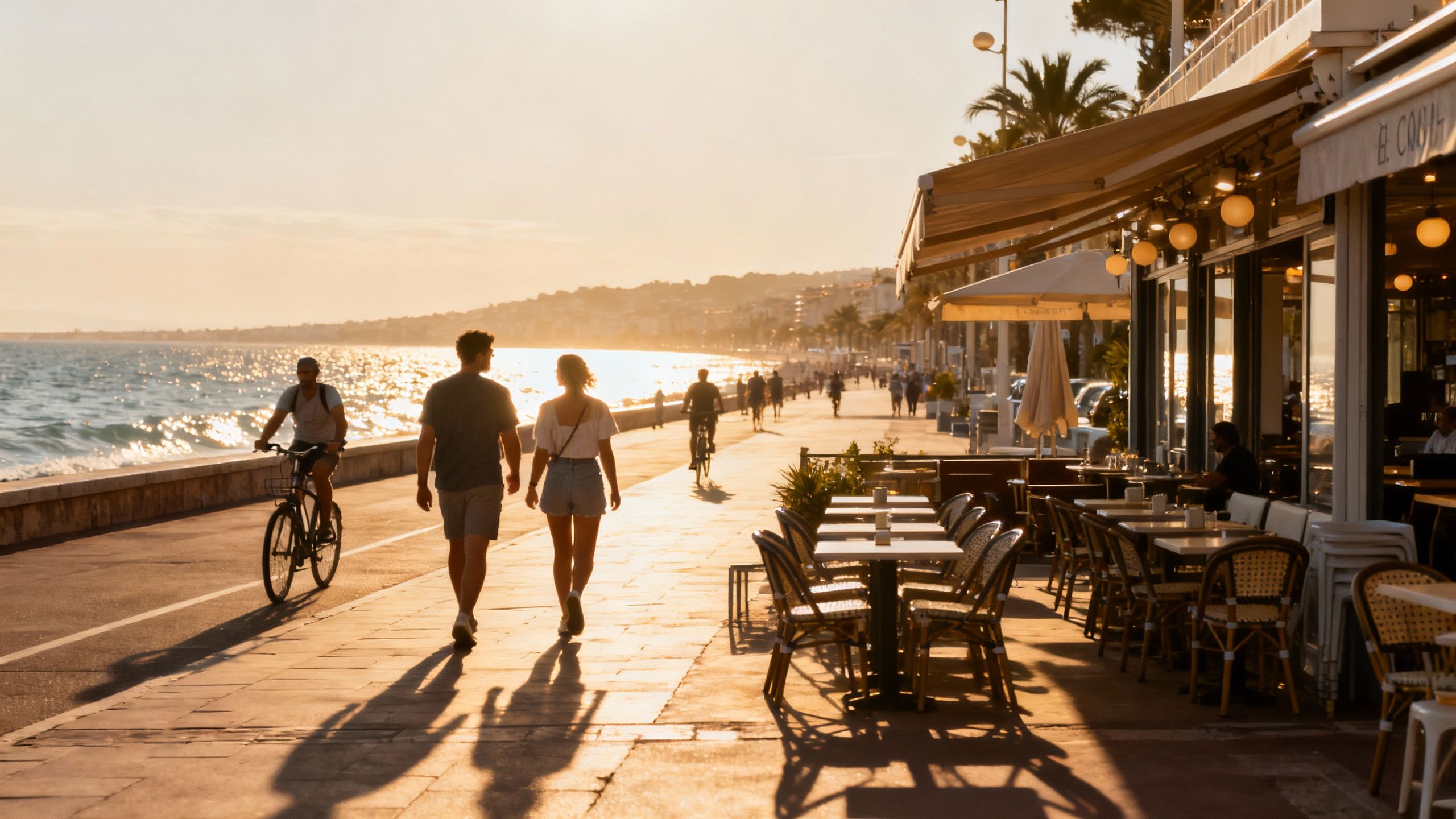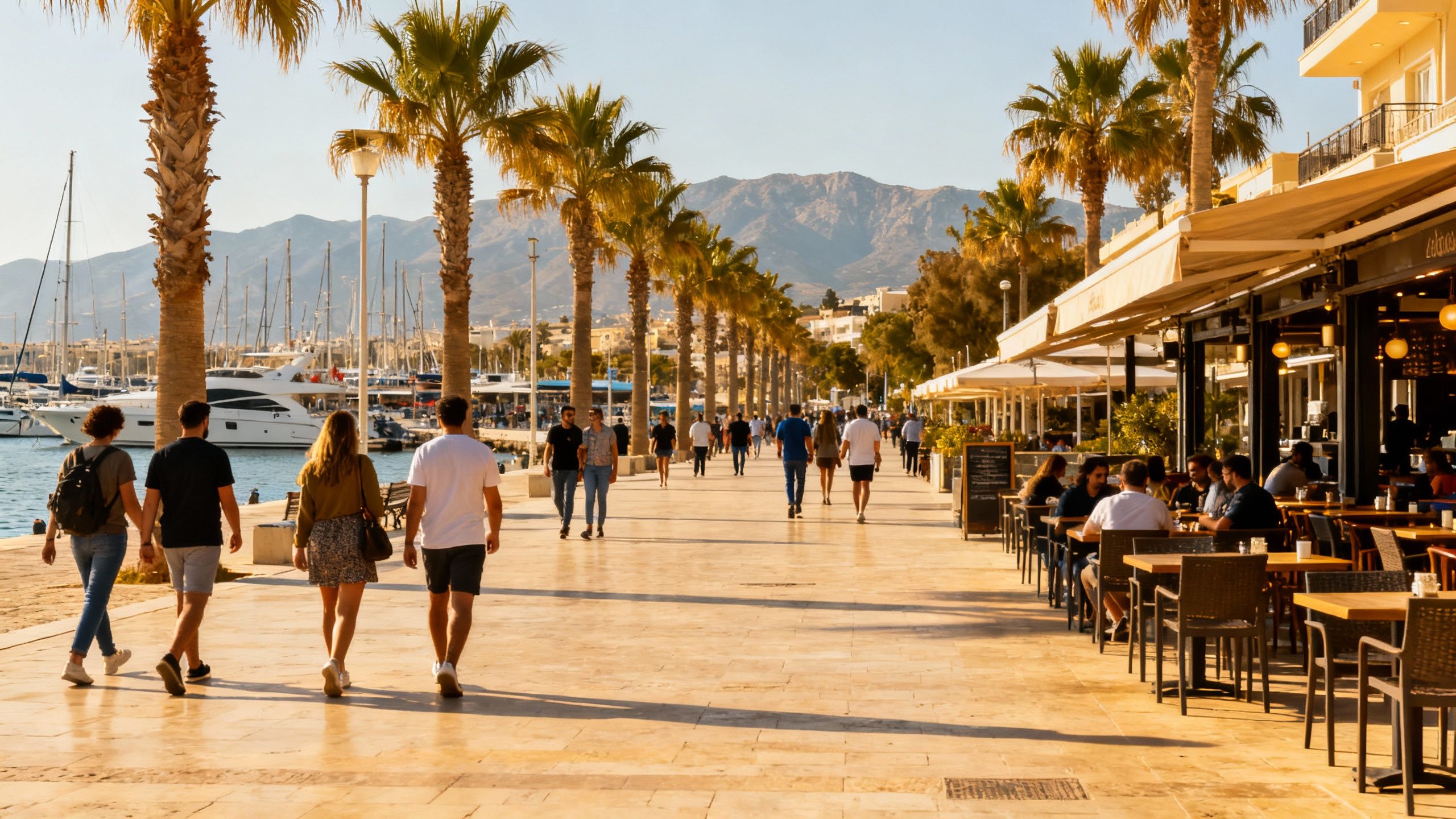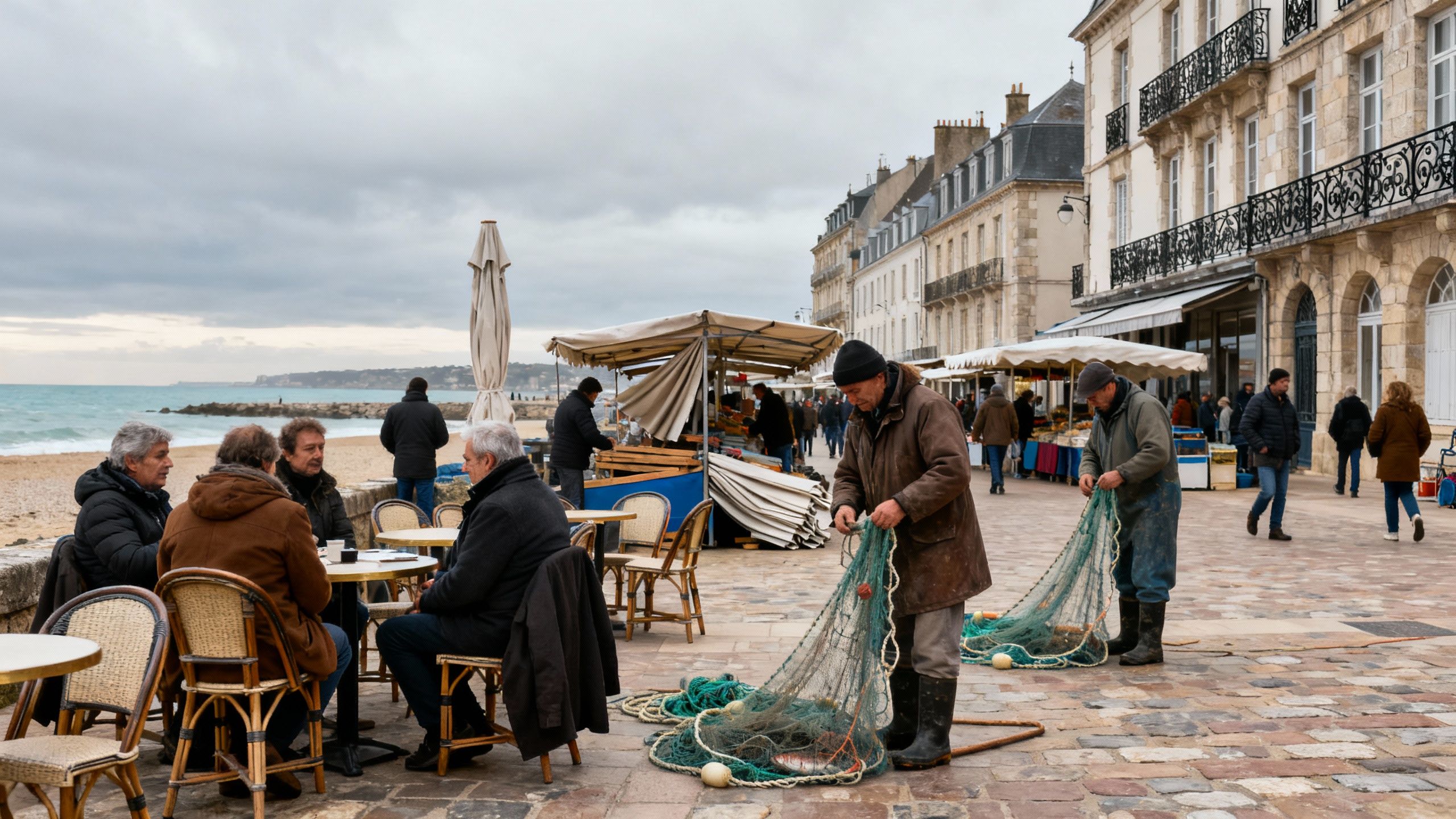Riviera vs Costa del Sol: lifestyle trade‑offs explained
France offers structured, year‑round coastal living while the Costa del Sol buys you outdoor space for the money; compare lifestyle rhythm, seasonality and real sales data before deciding.
Imagine waking on a November morning in Nice, the smell of roasted chestnuts on Cours Saleya, then swapping that Mediterranean hush for late‑afternoon chiringuitos and orange‑lit promenades on the Costa del Sol. Both coastlines promise sea, sun and cafés where people linger; what changes is the rhythm, price dynamics and the way you live day‑to‑day.
Living the French Riviera Life: texture, rituals and corners
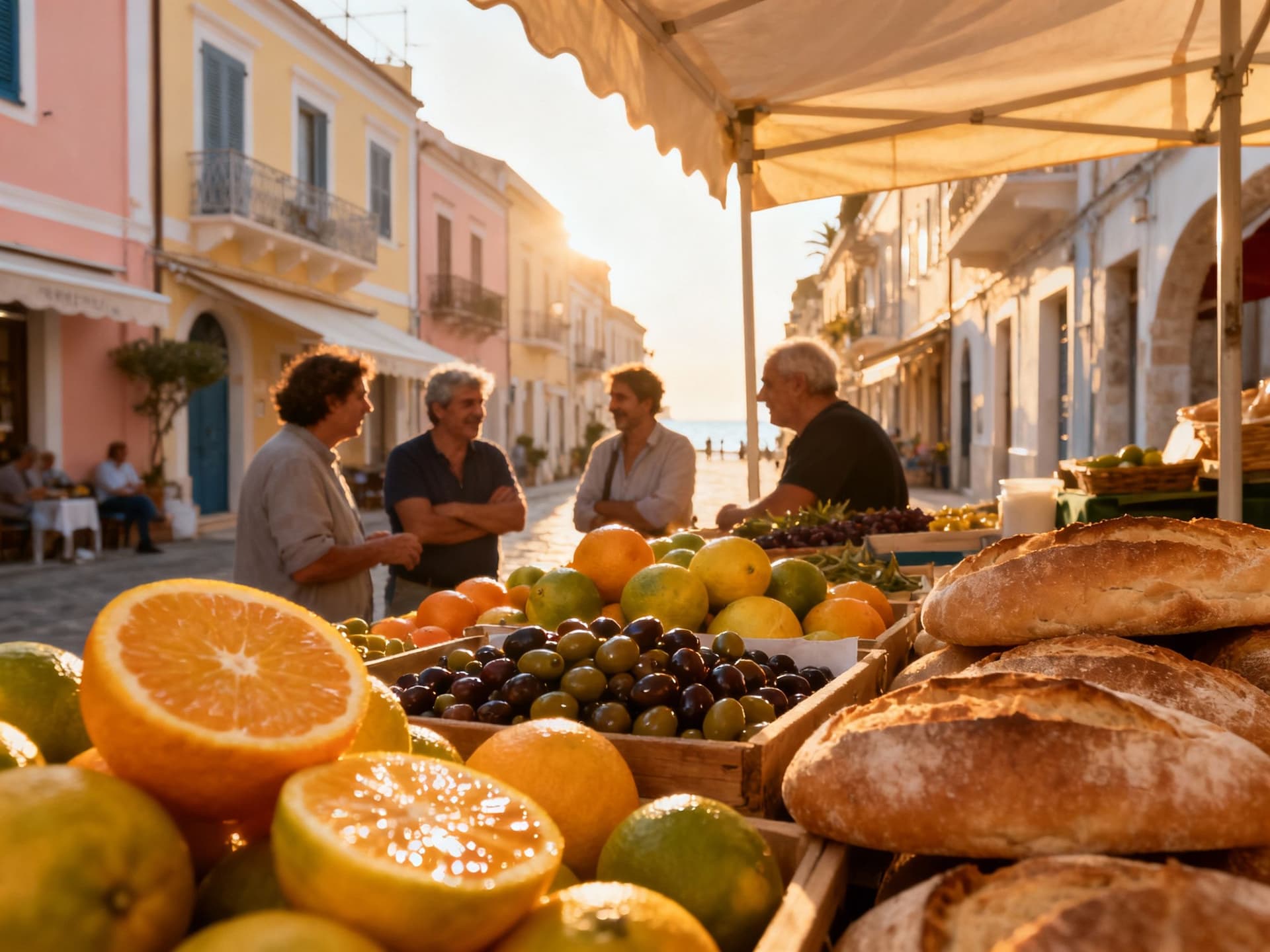
The Côte d’Azur is less a single place than a string of micro‑worlds: old‑town sailors in Antibes, art‑world afternoons in Saint‑Paul‑de‑Vence, and the muscular luxury of Monaco. Days begin with small rituals—espresso at a pavement table, a market run to buy olives and pissaladière—and end with late walks along promenades where architecture and coast meet. Savills notes limited supply in prime pockets keeps values stable and selective.
Nice & Vieux‑Nice: the lived‑in Riviera
Picture yourself on Rue Rossetti buying fougasse, breezing home through narrow lanes to a compact apartment with high ceilings. In Nice you trade large gardens for daily urban pleasures—bakeries, markets and a short tram ride to trains that connect you across France and Europe. Those conveniences shape what properties are desirable: well‑located flats with outdoor space or views command a premium.
Saint‑Tropez to Menton: tony towns, different tempos
Saint‑Tropez pulses in summer with yachts and international festivals; Menton is quieter, subtler, with lemon groves and a slower pace. Your lifestyle choice—buzz vs calm—directly influences where you buy and what you can expect from rental demand or weekender usage.
- Marketable lifestyle highlights
- Cours Saleya market (Nice) — daily produce, Provençal ritual
- Port Vauban (Antibes) — mooring culture and village cafés
- Promenade des Anglais — walking culture and strong transport links
- Coastal hiking (Cap Ferrat) — immediate access to outdoors from townhomes
- Local markets and neighbourhood bistros that anchor community life
Costa del Sol vs France: the unexpected trade‑offs buyers miss
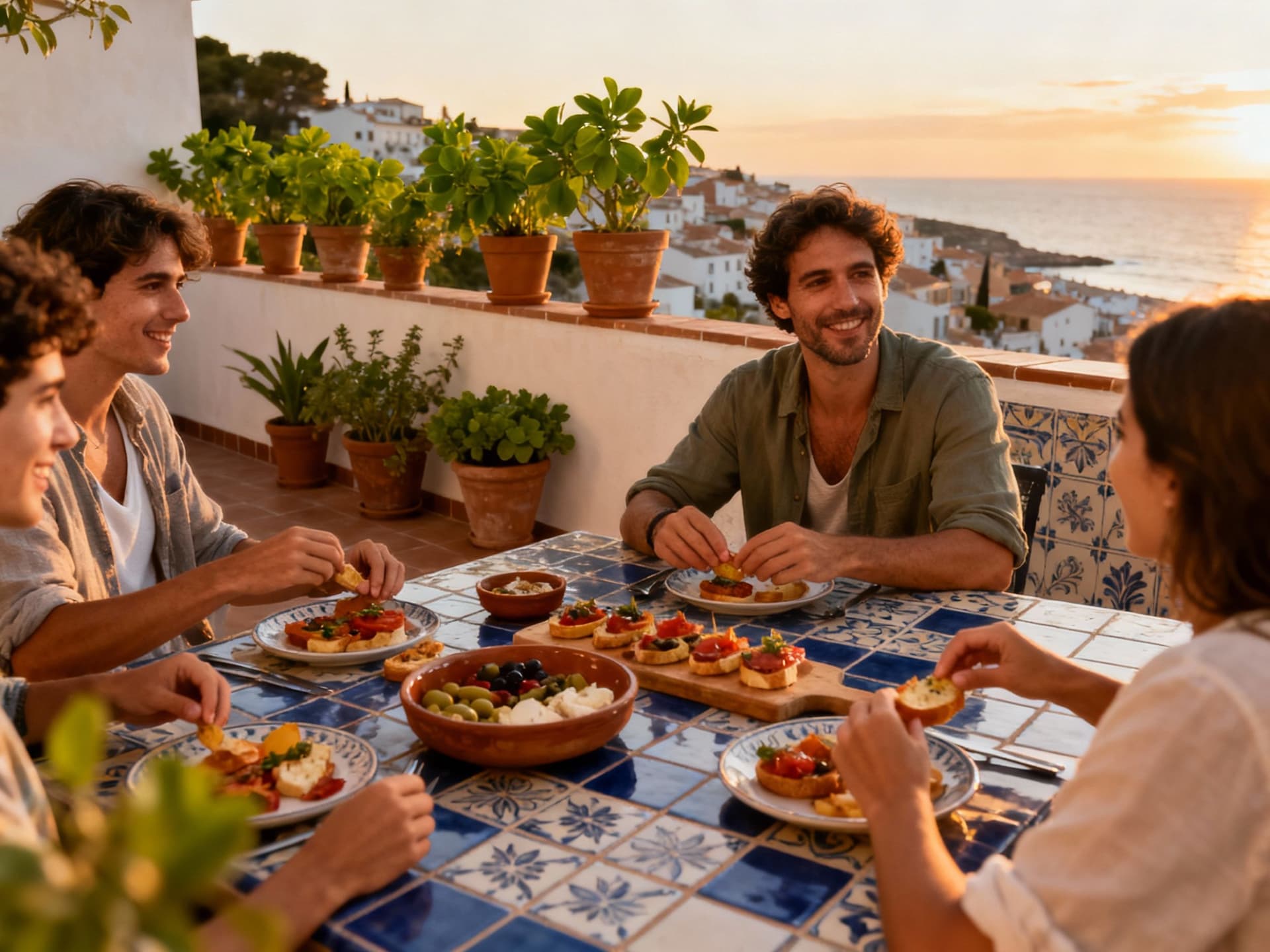
Most buyers think: France equals prestige and higher cost; Costa del Sol equals bargain sunshine. The reality is more nuanced. Marbella and the Costa del Sol have seen sharp international demand and rising asking prices, while French coastal prices are stabilising after a correction. Your choice is less about absolute cost and more about what lifestyle you want to monetise: short‑season luxury rentals, year‑round village life, or a commuter‑friendly coastal base.
Price context — recent data you should know
France (metropolitan) saw a return to modest quarter‑on‑quarter growth in Q1 2025 (+1.0%), reversing months of softening according to INSEE. Conversely, parts of the Costa del Sol—especially Marbella—reported double‑digit asking price rises in 2024–25 in local market surveys. That makes Spain attractive for new developments but presents inventory and competition challenges.
Lifestyle ↔ price trade‑offs to weigh
- French Riviera: higher per‑sqm for central apartments, exceptional cultural calendar, stronger public services; smaller gardens, stricter planning in heritage zones
- Costa del Sol: more new‑build supply in suburban pockets, bigger terraces and private pools for the money, pronounced seasonality and infrastructure strain in peak months
- Connectivity: France offers high‑speed rail and easy intra‑European access; southern Spain rewards car‑centred living and regional airports
Making the move: property types, agents and practical steps
Dreams collide with paperwork, but which property type will actually deliver the life you imagined? Match property form to routine: historic flat for daily urban rituals, townhouse for a village life, or new build with concierge for low‑maintenance seasonal letting. Work with agents who speak your language and understand the micro‑market.
Property styles & what they give you
A Belle Époque apartment near Place Masséna gives immediate access to city culture and transport; a renovated villa in Benahavís often buys you space, privacy and higher short‑season rental appeal. Consider heating, insulation and orientation—French winters call for efficient heating; Andalusian summers demand shaded terraces and AC.
How local expertise shapes outcomes
- Step‑by‑step priorities when you begin property search: 1) Lock down the lifestyle you want (urban mornings or beach afternoons). 2) Ask for comparable recent sales, not asking prices. 3) Insist on agency proof of local transactions and client references. 4) Visit in different seasons to test rhythm and noise. 5) Clarify rental rules and community fees up front. 6) Use bilingual legal counsel for contract review.
Good agents act as cultural translators—showing you which streets sleep at 4pm, which cafés close in low season, and where the bus route really runs. They also surface hidden costs like community syndic fees in France or urban development levies in Spain.
Insider knowledge: what expats wish they’d known
Expat buyers often underestimate seasonality and local bureaucracy. In France, cultural rhythms—long mid‑day closures, mairie schedules, and market days—shape daily life. In Spain, expect a pronounced summer economy and higher short‑term rental demand. Listening to residents and checking INSEE or local market reports gives you a reality check.
Cultural integration and daily life
Learn a few phrases, join a market stall queue and you’ll be welcomed. In smaller French towns, repeated social rituals—weekly marché, weekly boulangerie runs—create community; in many Costa del Sol towns, international circles form around marinas, golf clubs and expat cafés. Your social life often follows where you shop and where your children go to school.
Long‑term lifestyle considerations
Ask how a town functions off‑season: are shops closed, is the medical centre year‑round? For long stays, proximity to good healthcare and transport tends to matter more than a dramatic view. Over time, you’ll trade novelty for convenience—choose the rhythm you can see yourself sustaining.
- Expats’ top red flags to check before you buy
- Unstaged comparables: sellers giving asking prices rather than final sales figures
- Community rules that restrict rentals or alterations (syndic in France; urban plan in Spain)
- Seasonal infrastructure limits (water, waste, public transport) that affect full‑time living
Conclusion: The coast you choose is less about price per square metre and more about how you want to live. France offers structured public services, strong cultural calendars and compact urban pleasures; the Costa del Sol gives you larger outdoor private space and a buoyant new‑build market but with sharper seasonality. Visit both off‑season, compare net yields versus lifestyle dividends, and work with local agents who can show real sales, not just glossy photos. When you do, your choice will feel less like a gamble and more like choosing a rhythm that fits you.
British investor turned advisor after buying in Costa del Sol since 2012. Specializes in cross-border compliance and data-driven investment strategies for UK buyers.
